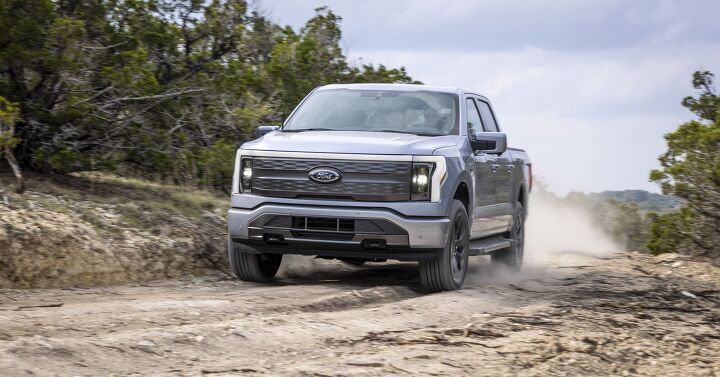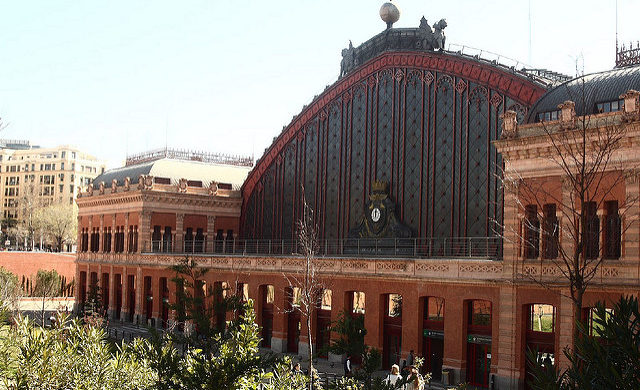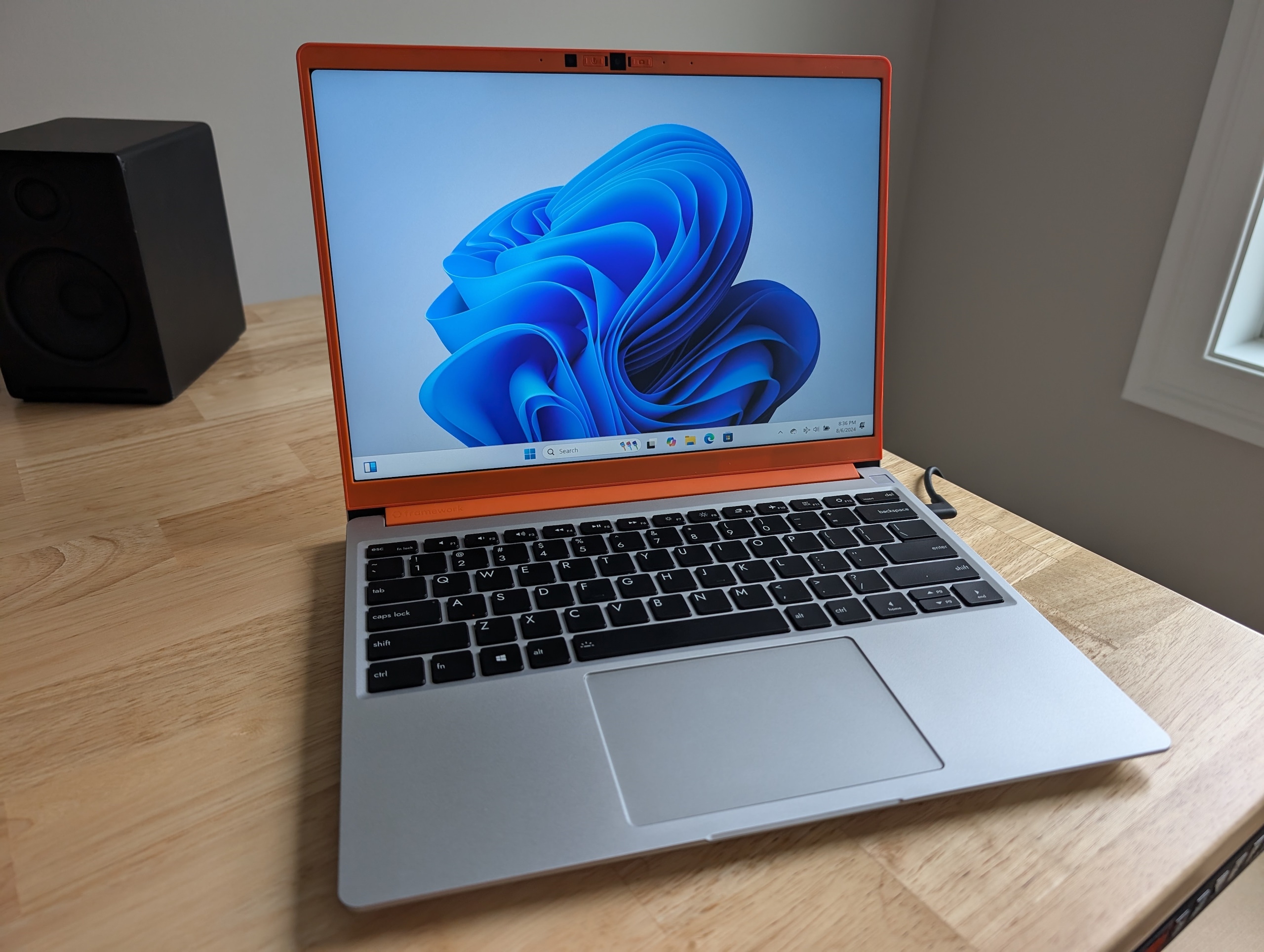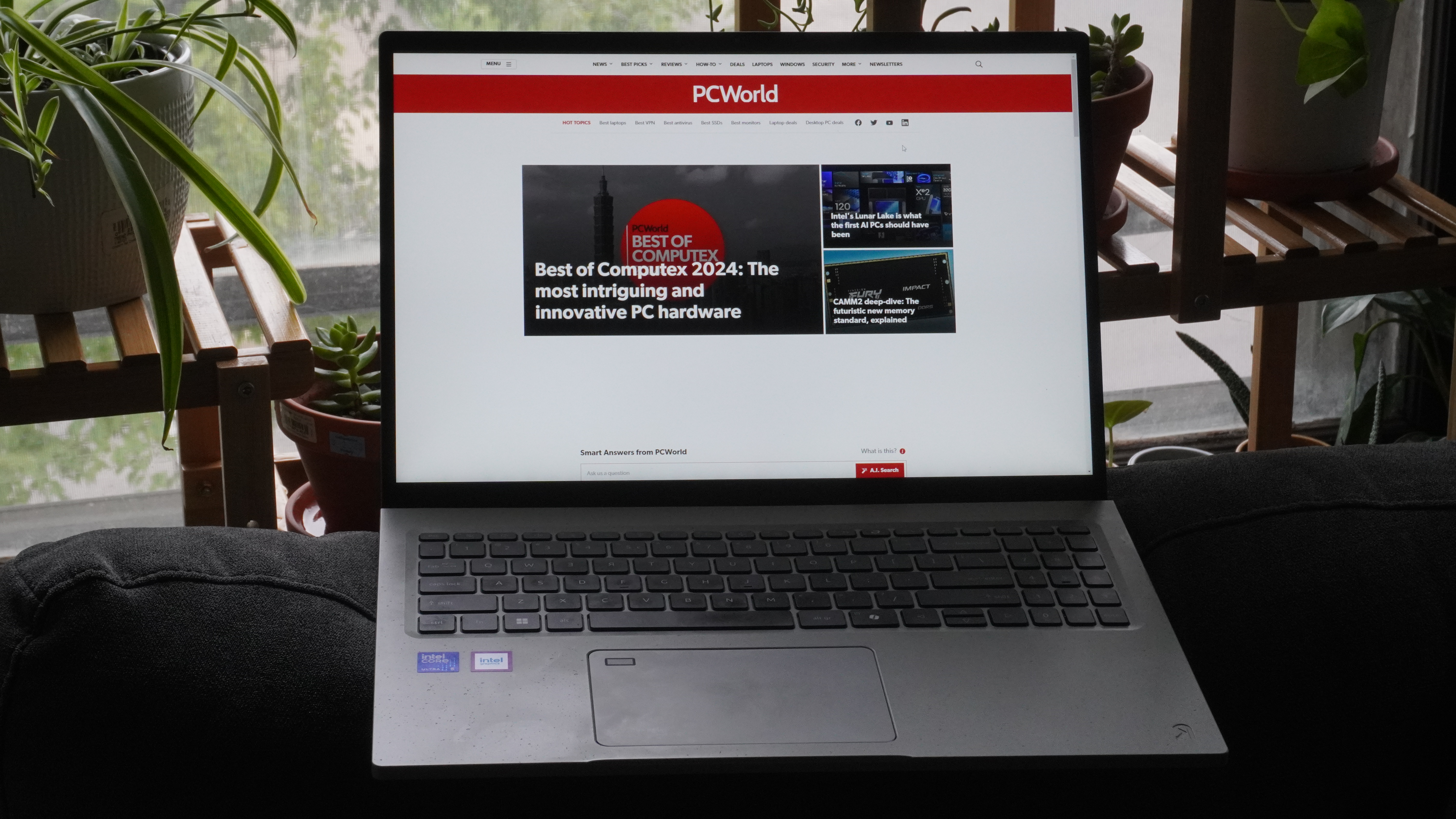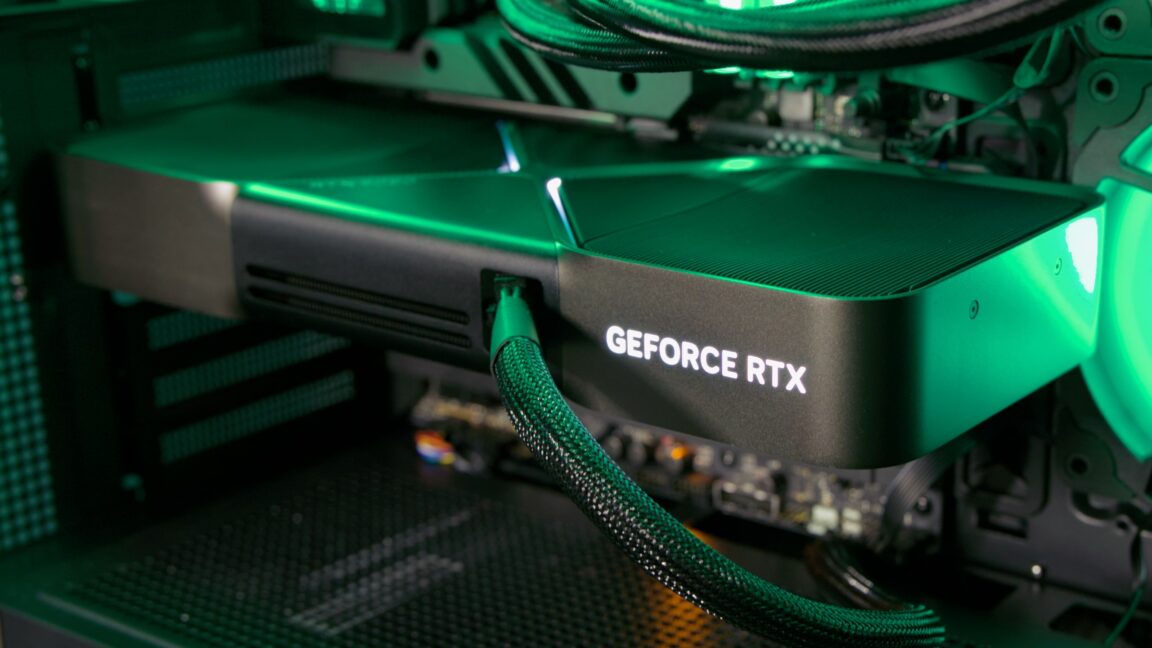Why I’m switching to an eco-friendly laptop
Recently, I’ve started to consider my own impact on the environment. As someone who occasionally reviews laptops, there are times when I’ve accumulated a collection of them in my home office. Whenever I gaze upon this backlog, I’m reminded of my own contribution to the omnipresent problem of electronic waste, which is why my next laptop will be an eco-friendly one. Laptops, as you may or may not know, are not great for the environment! They often contain rare earth materials like lithium. Not only does lithium take a lot of resources to mine, but its extraction can also upset natural ecosystems. Plus, when it’s time to dump an old laptop, all or parts of it will end up sitting in landfill and contaminating nearby ground waters. The impact laptops have on the environment is bigger than you may think. Further reading: Best laptops 2025: Premium, budget, gaming, 2-in-1s, and more What is a sustainable laptop? Before I dive into the reasons why I’m switching to an eco-friendly laptop, I should first establish what that means. A sustainable laptop is designed to minimize the impact it has on the environment. This is done by using recycled materials and/or a repairable/upgradeable design. Framework laptops, for example, have a modular design that makes it easy to swap out old parts for new ones, thus extending the life of the laptops. Acer Vero laptops, on the other hand, consist of recycled materials like oyster shells and post-consumer recycled plastics. Choosing a refurbished laptop over a new one can help offset the environmental impact, as well. It takes a lot of materials to make a brand-new laptop, so by picking a refurbished one you’re circumventing that process. If you’re going the refurbished route, then I’d recommend buying from an official manufacturer. Getting a warranty with your purchase is always a good idea, too. Upgradability is a must I love the idea of a laptop you can upgrade over time, which is one of the main reasons why I’m making the switch. Most laptops aren’t upgradeable, which means you’re stuck with the internal components until they age out. In this case, the only way to get a laptop with the latest hardware is to buy a new one, which eats up carbon emissions and generates more electronic waste (otherwise known as e-waste). A laptop with a modular design, for example, allows you to easily remove the module components and then slot in new ones. Framework is a company that makes this process so easy it’s ridiculous. If you crack open a Framework laptop, you’ll see that each part is marked with a bar code, which you can then scan with your smartphone. The link that pops up will direct you to the exact part on Framework’s website. You can also get a laptop with a removable chassis. As long as you have access to the internal components, you’ll likely be able to upgrade things like the RAM and storage. Framework Laptop 13 Read our review I love the way the Acer Vero line of laptops look Acer’s Vero laptops are sustainable, which is great, but I’ve always liked the look of them. Just because they’re made of recycled materials doesn’t mean they have to be unsightly. The 2023 Acer Aspire Vero, for example, features a bluish-green colorway with flecks of lighter green embedded throughout the exterior. It’s nothing like I’ve ever seen and it’s more exciting than a boring gray slab. I’m currently eyeballing the 2025 model of the Vero for myself. Not only is it partially made of biomaterial from oyster shells, a first for a sustainable laptop, but it also features the same speckled look that I’m such a fan of. If I’m going to invest in an eco-friendly laptop, I might as well like how it looks, yeah? Acer Aspire Vero 16 Read our review Recyclable packaging makes me happy Nothing sets me off quite like piles of cardboard and bits of packing material flying around the house. Whenever I unbox a new laptop that I’m going to review, I’m always stunned by the amount of packaging I have to go through. I’m not someone who can easily operate in a mess–I don’t like it when a bunch of cardboard just sits around and takes up space. Fortunately, some eco-friendly laptops, like the Acer Aspire Vero 16, come with fully recyclable packaging. So, what does that mean exactly? Well, it’s packaging that can be recycled multiple times and made into different

Recently, I’ve started to consider my own impact on the environment. As someone who occasionally reviews laptops, there are times when I’ve accumulated a collection of them in my home office. Whenever I gaze upon this backlog, I’m reminded of my own contribution to the omnipresent problem of electronic waste, which is why my next laptop will be an eco-friendly one.
Laptops, as you may or may not know, are not great for the environment! They often contain rare earth materials like lithium. Not only does lithium take a lot of resources to mine, but its extraction can also upset natural ecosystems. Plus, when it’s time to dump an old laptop, all or parts of it will end up sitting in landfill and contaminating nearby ground waters.
The impact laptops have on the environment is bigger than you may think.
Further reading: Best laptops 2025: Premium, budget, gaming, 2-in-1s, and more
What is a sustainable laptop?
Before I dive into the reasons why I’m switching to an eco-friendly laptop, I should first establish what that means. A sustainable laptop is designed to minimize the impact it has on the environment. This is done by using recycled materials and/or a repairable/upgradeable design.
Framework laptops, for example, have a modular design that makes it easy to swap out old parts for new ones, thus extending the life of the laptops. Acer Vero laptops, on the other hand, consist of recycled materials like oyster shells and post-consumer recycled plastics.
Choosing a refurbished laptop over a new one can help offset the environmental impact, as well. It takes a lot of materials to make a brand-new laptop, so by picking a refurbished one you’re circumventing that process. If you’re going the refurbished route, then I’d recommend buying from an official manufacturer. Getting a warranty with your purchase is always a good idea, too.
Upgradability is a must
I love the idea of a laptop you can upgrade over time, which is one of the main reasons why I’m making the switch. Most laptops aren’t upgradeable, which means you’re stuck with the internal components until they age out. In this case, the only way to get a laptop with the latest hardware is to buy a new one, which eats up carbon emissions and generates more electronic waste (otherwise known as e-waste).
A laptop with a modular design, for example, allows you to easily remove the module components and then slot in new ones. Framework is a company that makes this process so easy it’s ridiculous. If you crack open a Framework laptop, you’ll see that each part is marked with a bar code, which you can then scan with your smartphone. The link that pops up will direct you to the exact part on Framework’s website.
You can also get a laptop with a removable chassis. As long as you have access to the internal components, you’ll likely be able to upgrade things like the RAM and storage.
I love the way the Acer Vero line of laptops look
Acer’s Vero laptops are sustainable, which is great, but I’ve always liked the look of them. Just because they’re made of recycled materials doesn’t mean they have to be unsightly. The 2023 Acer Aspire Vero, for example, features a bluish-green colorway with flecks of lighter green embedded throughout the exterior. It’s nothing like I’ve ever seen and it’s more exciting than a boring gray slab.
I’m currently eyeballing the 2025 model of the Vero for myself. Not only is it partially made of biomaterial from oyster shells, a first for a sustainable laptop, but it also features the same speckled look that I’m such a fan of. If I’m going to invest in an eco-friendly laptop, I might as well like how it looks, yeah?
Recyclable packaging makes me happy
Nothing sets me off quite like piles of cardboard and bits of packing material flying around the house. Whenever I unbox a new laptop that I’m going to review, I’m always stunned by the amount of packaging I have to go through. I’m not someone who can easily operate in a mess–I don’t like it when a bunch of cardboard just sits around and takes up space. Fortunately, some eco-friendly laptops, like the Acer Aspire Vero 16, come with fully recyclable packaging. So, what does that mean exactly?
Well, it’s packaging that can be recycled multiple times and made into different things. In fact, many major laptop manufacturers are sending laptops out with recyclable packaging nowadays. According to Dell’s sustainability brochure, the company promises that “100 percent of [their] packaging and more than 50 percent of [their] product content will be made from recycled or renewable materials” by 2030.
Laptop companies are also doing a lot of other cool things to lower their carbon footprint. Dell makes it incredibly easy to recycle your laptop, which helps cut down e-waste. Lenovo even offers a “reduced carbon transport” to their service centers. You can read more about that in their sustainability brochure.
The fact is that laptop manufacturers are doing their due diligence to cut down on e-waste and those efforts should definitely be applauded.
A laptop with a metal unibody is nice, but I don’t need it
I don’t mind a plastic build, I really don’t. I’m very careful when handling my electronic devices whether it’s a laptop, a smartphone, or a handheld gaming device. I’m careful not to place them in precarious positions where they’re in danger of falling, and I don’t travel with my laptops. My lifestyle is relatively low-key and I’m a more cautious person than most, so I don’t need a laptop with a metal chassis.
Many sustainable laptops are made of recycled plastics, which might bug some people. I personally don’t mind the look and feel of a plastic build. All I care about is that the hinge that connects the screen to the keyboard feels firm. A metal chassis is more durable, sure. It’s a stronger material, after all. But mining metal (especially aluminum) is definitely more harmful for the environment, as it generates more carbon emissions. I also don’t mind the slight flex of a plastic build, as long as it’s sturdy and holds the components inside like it’s supposed to!






















